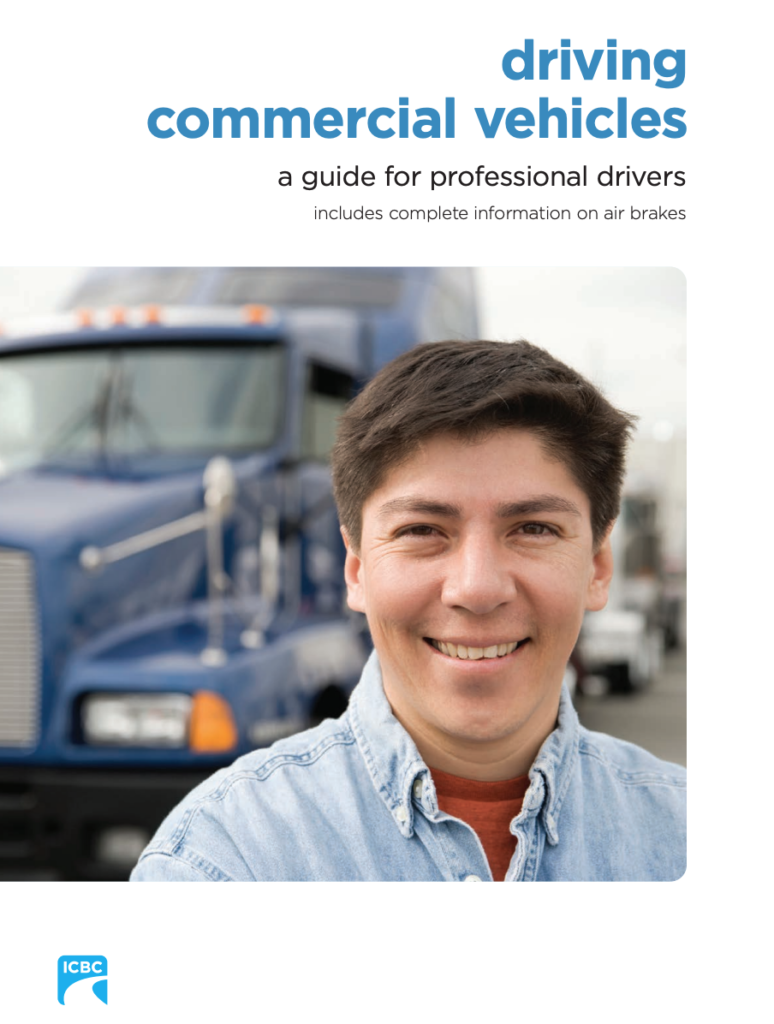BRITISH COLUMBIA CLASS 1 LICENCE TEST 2023
What is a Class 1 Licence in British Columbia?
A Class 1 Licence in British Columbia allows you to operate a motor vehicle with a gross vehicle weight rating (GVWR) over 11,794 kg or any combination of vehicles where the towed vehicle has a GVWR of more than 4,600 kg.
Who is eligible to apply for a Class 1 Licence in British Columbia?
To be eligible for a Class 1 Licence, you must be at least 19 years old and have a Class 5 (full-privilege) driver’s licence in British Columbia.
What are the steps to obtain a Class 1 Licence in British Columbia?
The steps generally include passing a knowledge test, obtaining a learner’s Class 1 licence, completing a training program (if applicable), and passing a road test. The road test typically consists of a pre-trip inspection, an air brake test (if applicable), and a practical driving examination.
What topics are covered in the Class 1 Licence knowledge test?
The knowledge test includes questions related to air brakes (if applicable), safe driving practices, traffic laws and regulations, and general knowledge about operating Class 1 vehicles.
How can I prepare for the Class 1 Licence knowledge test in British Columbia?
You can prepare for the knowledge test by studying the British Columbia Commercial Driving Manual, which is available online. You can also take practice tests to assess your knowledge and identify areas where you might need additional study.
Do I need to take an air brake endorsement test for a Class 1 Licence?
If you plan to operate vehicles equipped with air brakes, you will need to obtain an air brake endorsement. This may require passing an air brake knowledge test in addition to the Class 1 Licence knowledge test.
What are the fees associated with getting a Class 1 Licence in British Columbia?
The fees for a Class 1 Licence can vary, and they may include the knowledge test fee, learner’s licence fee, and road test fee. There may also be additional costs for any required training programs.
Are there age restrictions for obtaining a Class 1 Licence in British Columbia?
Yes, you must be at least 19 years old to apply for a Class 1 Licence in British Columbia.
Is there a waiting period between passing the knowledge test and taking the road test for a Class 1 Licence?
The waiting period can vary, but generally, you will need to hold a Class 1 Learner’s Licence for a certain period and gain practical experience before taking the road test. This waiting period may be several months.
How long is a Class 1 Licence valid in British Columbia?
In British Columbia, a Class 1 Licence is typically valid for five years. You will need to renew it before the expiry date to continue driving commercially.
What is the difference between a Class 1 Licence and other commercial driver’s licences, like Class 2 or Class 3?
Class 1 allows you to drive the heaviest and most complex vehicles, typically tractor-trailers or semi-trucks. Class 2 and 3 licences are for buses and trucks of lighter classifications, respectively.
Please note that regulations and requirements may change over time, so it’s important to check with the British Columbia Ministry of Transportation and Infrastructure or visit their official website for the most up-to-date information regarding Class 1 Licence requirements and testing procedures.

